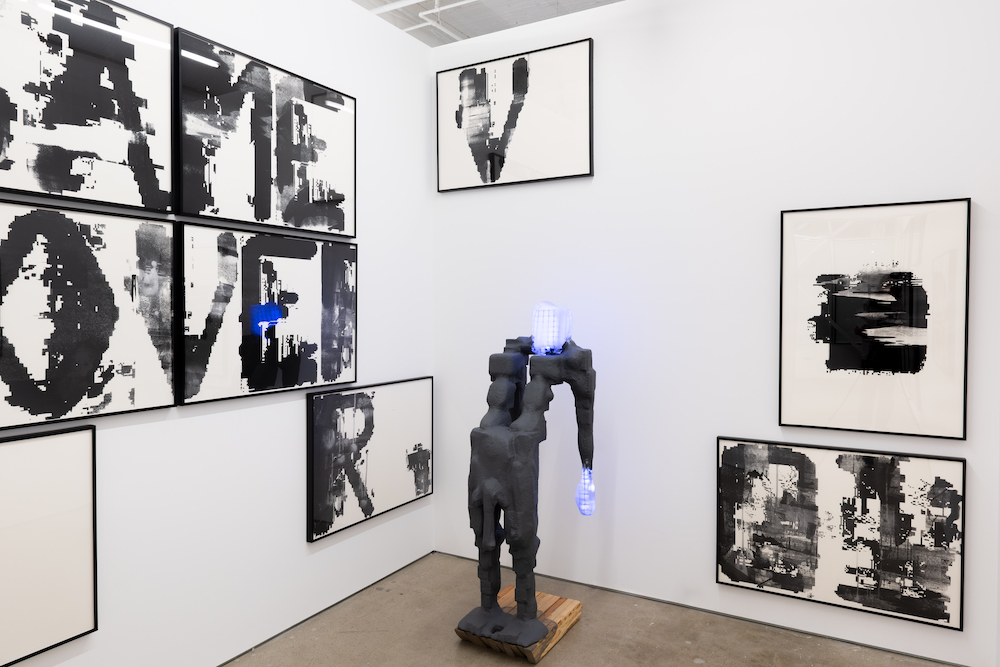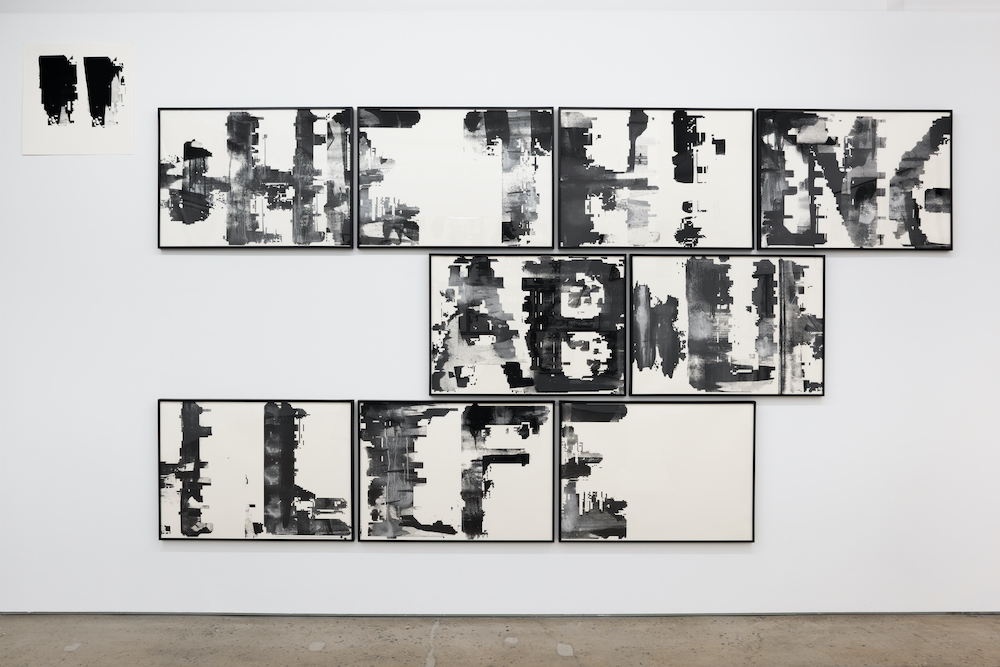Will Rawls’ solo exhibition, “Amphigory,” at Adams & Ollman in Portland, OR binds a weightless density to a lexicon of its own creation. Multi-panel installations of black & white abstract prints on paper line the three walls of the gallery space, as well as the smaller exhibition space in the back. The word amphigory itself implies a discordant tone, a nonsense verse that might seem to have a deeper, latent meaning but ultimately is revealed to be meaningless. Given this fixed precept, the intentionally blurred and glitching letters within each frame – a scattered “CA” or “IV” or “IFE” – bear little grammatical context. Yet, the subtle semantics of the visual pieces become apparent as a common narrative is deciphered as the works are observed not individually but instead assembled as a collective whole.
The phrases “Woops! Game Over”, “The Thing About Life” and “You Can’t Escape Alive” take shape upon a more concentrated consideration of the temporal logistics of each hanging print. What at first appears to be nonchalance, a disavowal of rationality, flows more eloquently when read traditionally left to right, top to bottom. Borrowed from the artist’s father’s vocabulary, the sentences formed evoke a more personal resonance. “Amphigory“ serves as a natural extension of Rawls’ creative practice spanning performance, video, text and installation, wherein the artist’s mark is visibly traced into each pixelated and distorted letter. A mark is extended, scraped across the paper, or, in other instances, incomplete, leaving the moment of signification in flux. Each of those sites of expression are imbued with the artist’s fascination with language as a locus for discourse, allowing words to morph, become muddled, and open new avenues of translation.

Will Rawls, “Amphigory” exhibition installation view, 2022. Image courtesy of the artist and Adams & Ollman.
In this vein, Rawls’ wordplay allows for a multi-layered meaning to grace the space of the gallery. The only four unframed works present in the space are hung higher, above the central framed statements and slightly apart from the cohesive suite of script. How I discern these outliers is something akin to shapeshifters – linguistic glyphs that can serve as either punctuation or as unique morphemes to build new units of conversation.
01 is the sole figural element within this exhibition, located in the backroom of Adams & Ollman alongside the phrases “Woops!” and “Game Over”. Sculpted of foam, resin, epoxy, electrical conduit tubing, LED lights, acrylic paint, wood, and woodstain this lifesize likeness is a literal representation of “a body of text”. The almost humanoid sculptural stands on a wooden base, lit from within in one “hand” and in the head-space of the figure while appearing almost to bend back on itself in a concave, unnatural manner. The structural composition of this piece toys with similar qualities employed with the two dimensional works, continuing the rhetoric around abstraction and free-form interpretation. If a body can confuse analysis under these circumstances, what is to be said of concrete, printed matter?



















Wow! And wonderful interpretation. Thank you